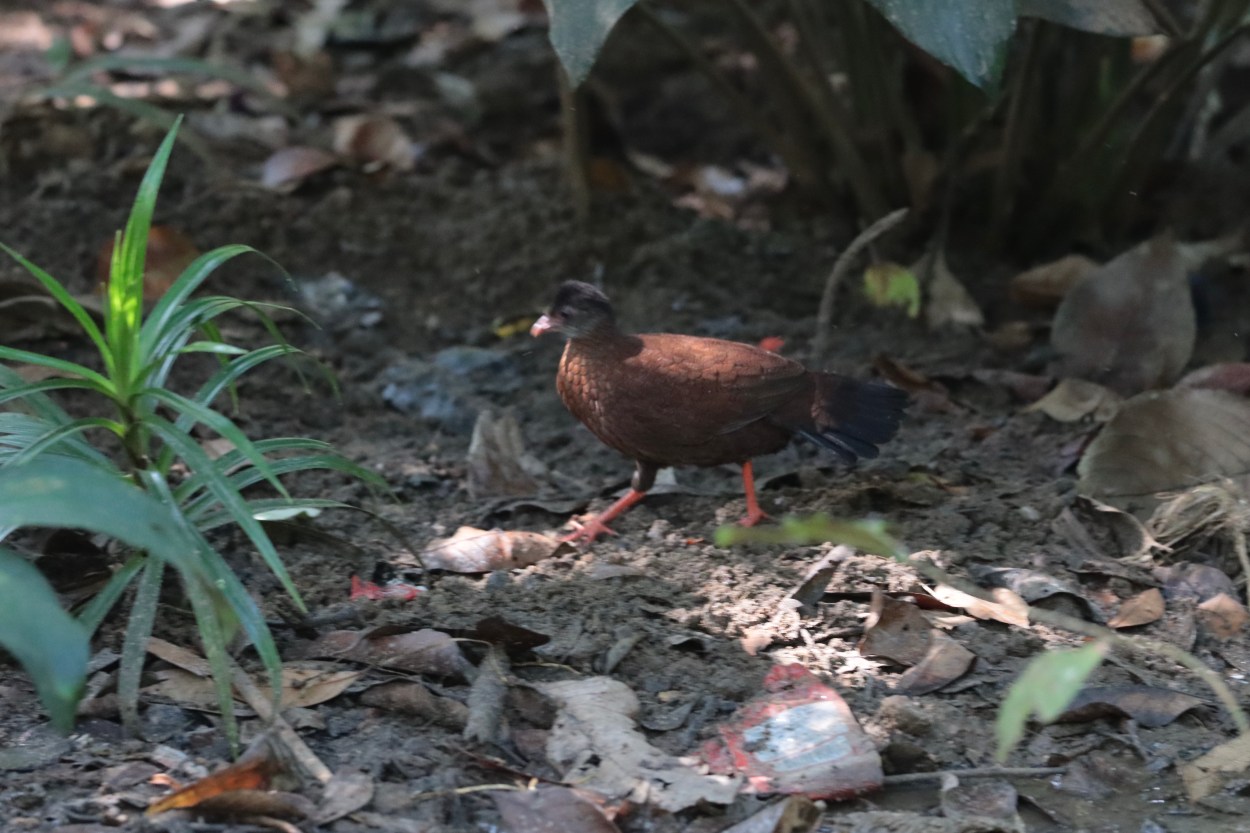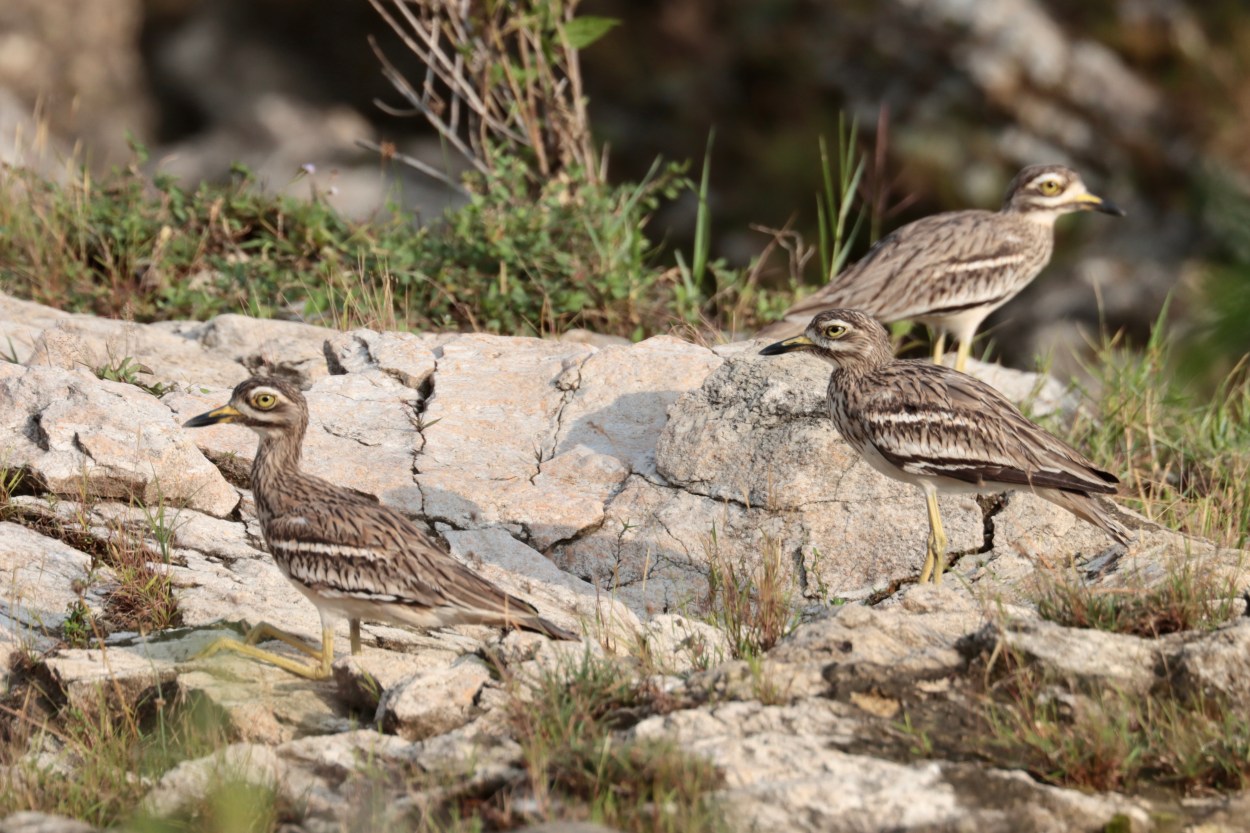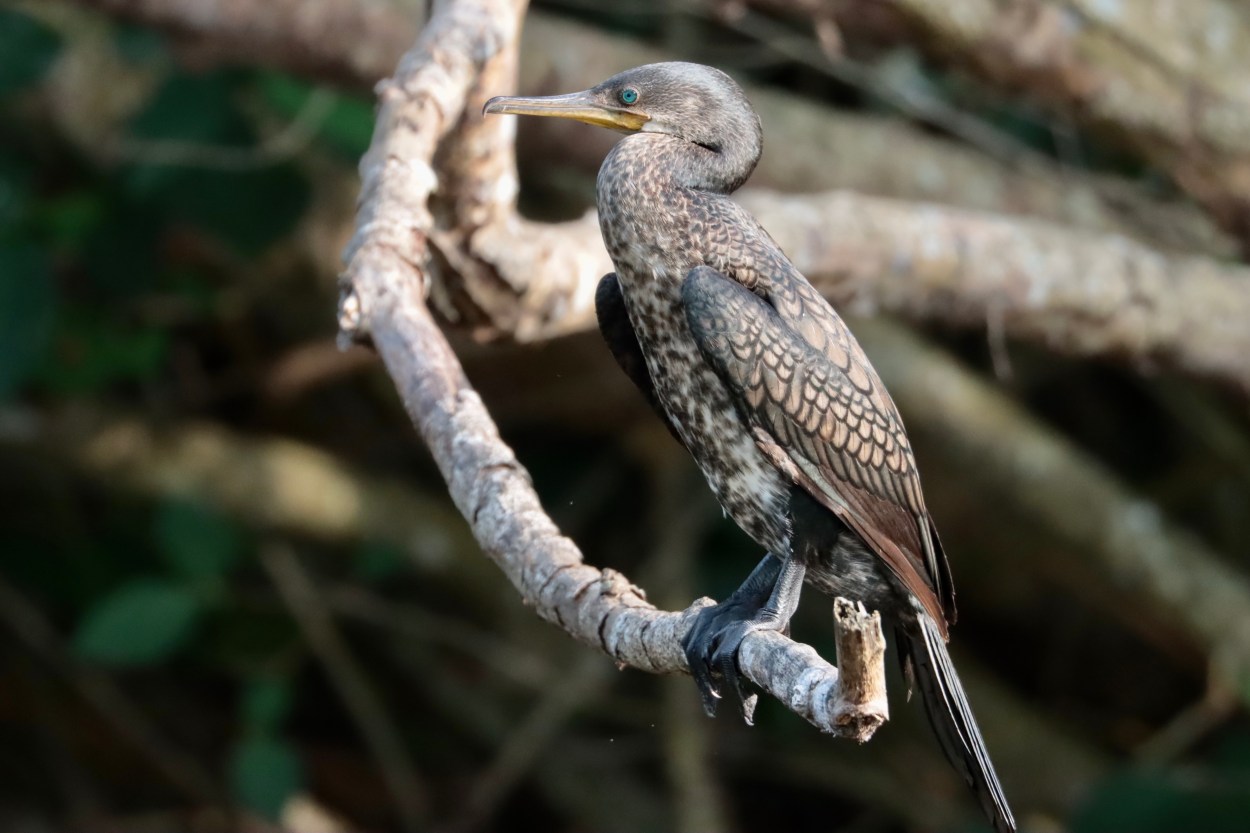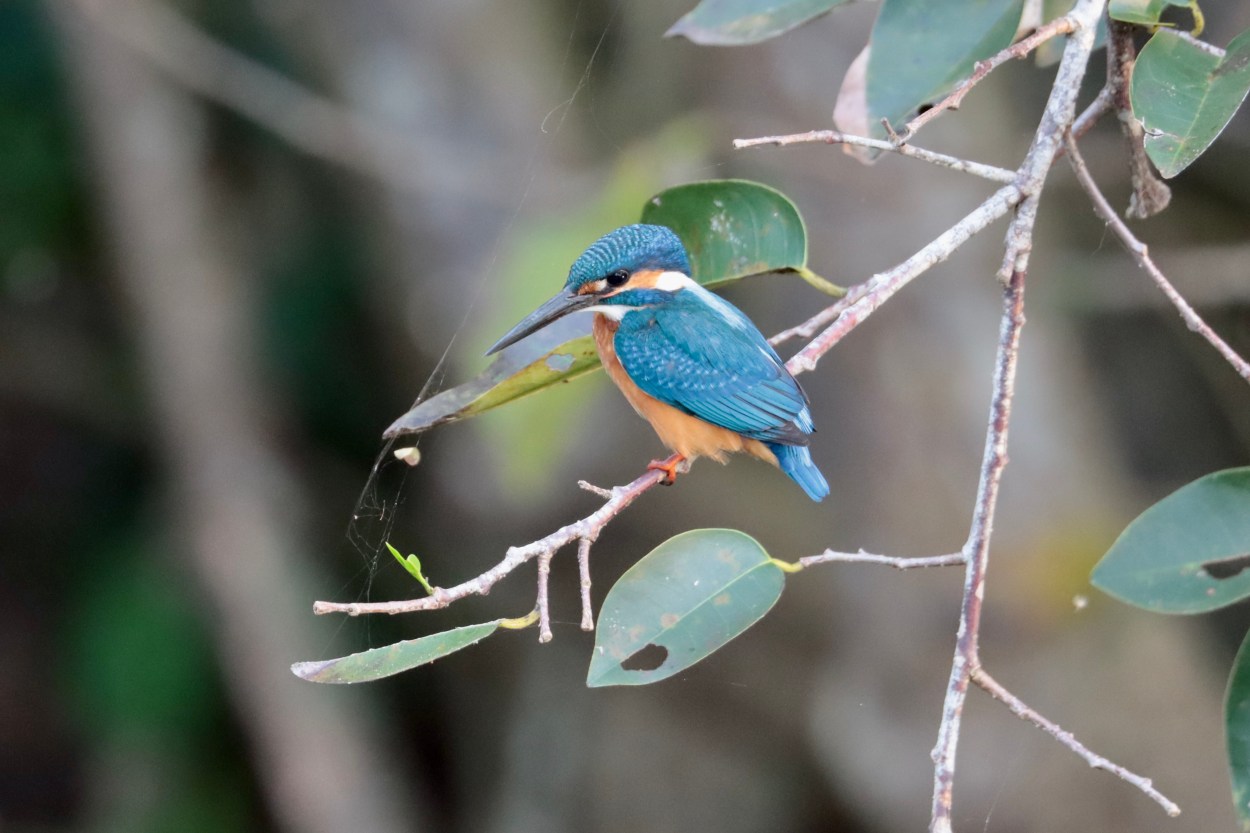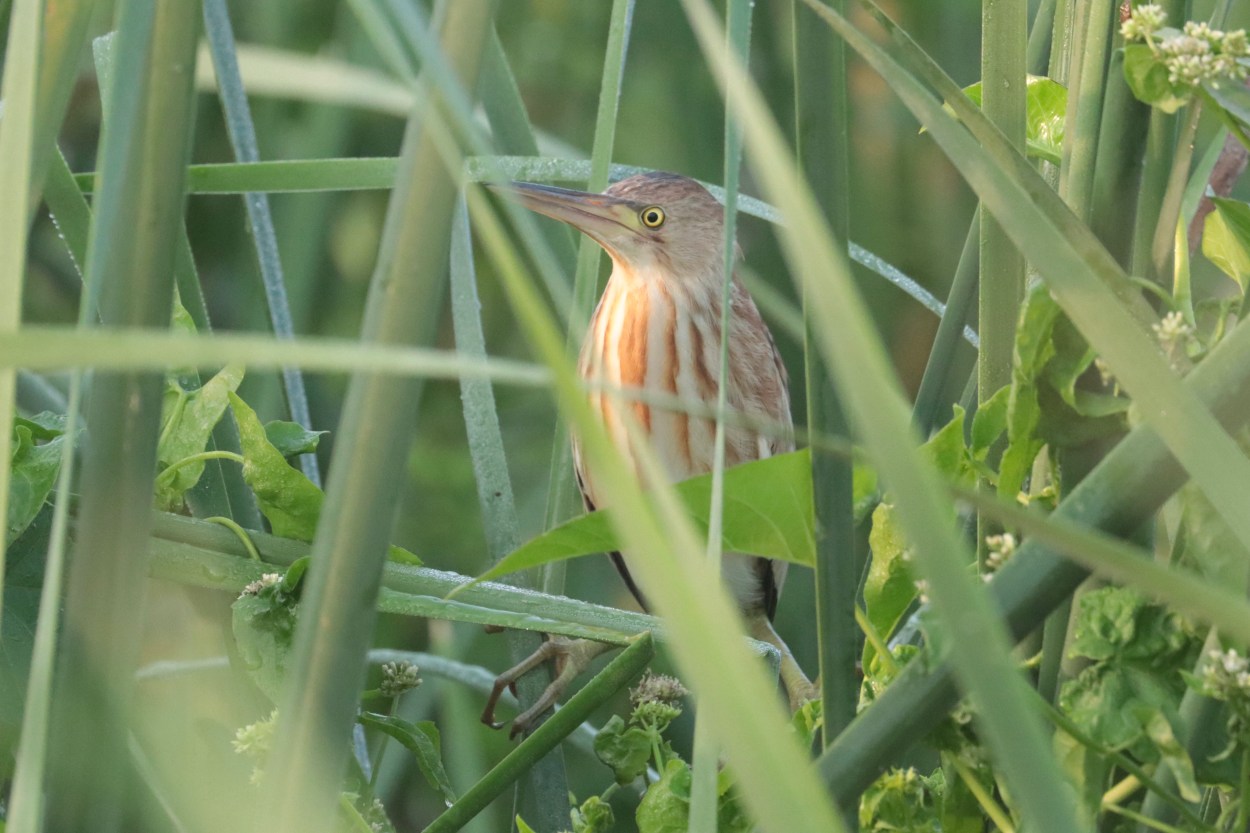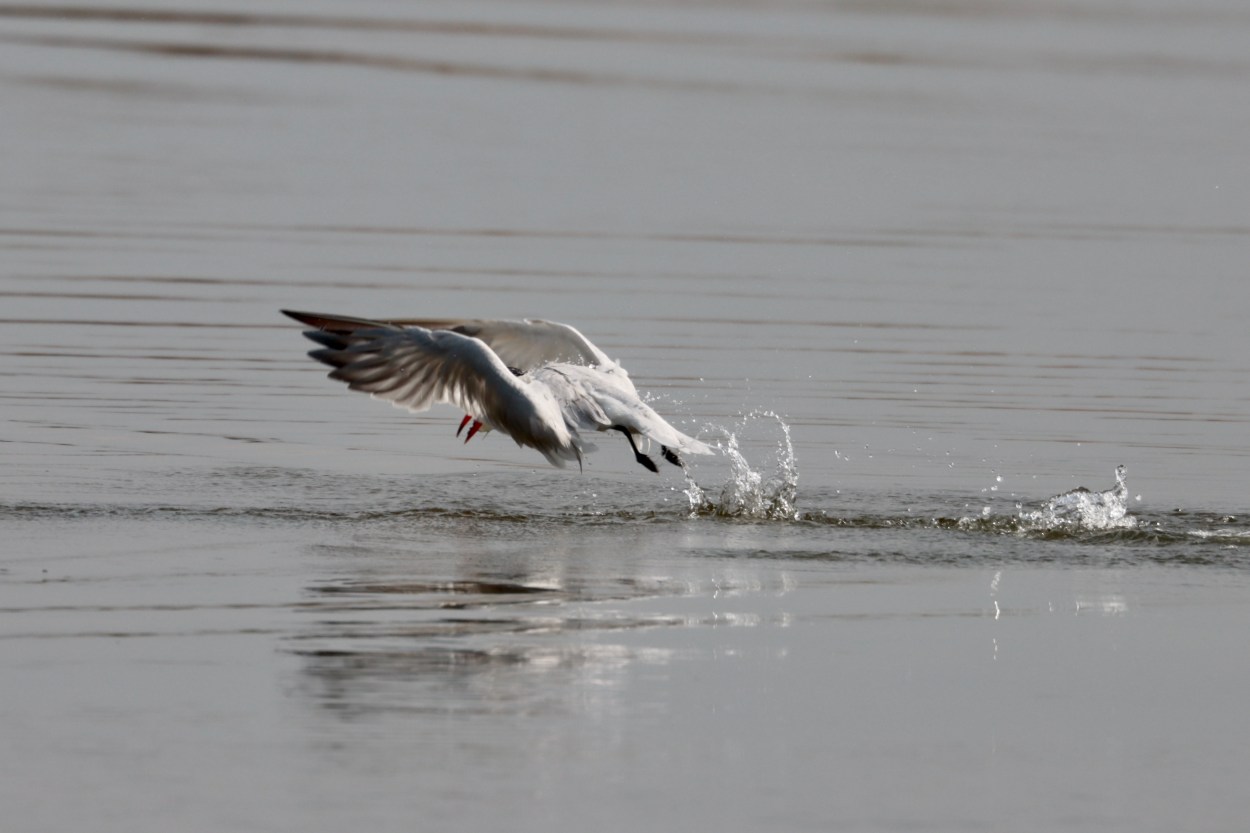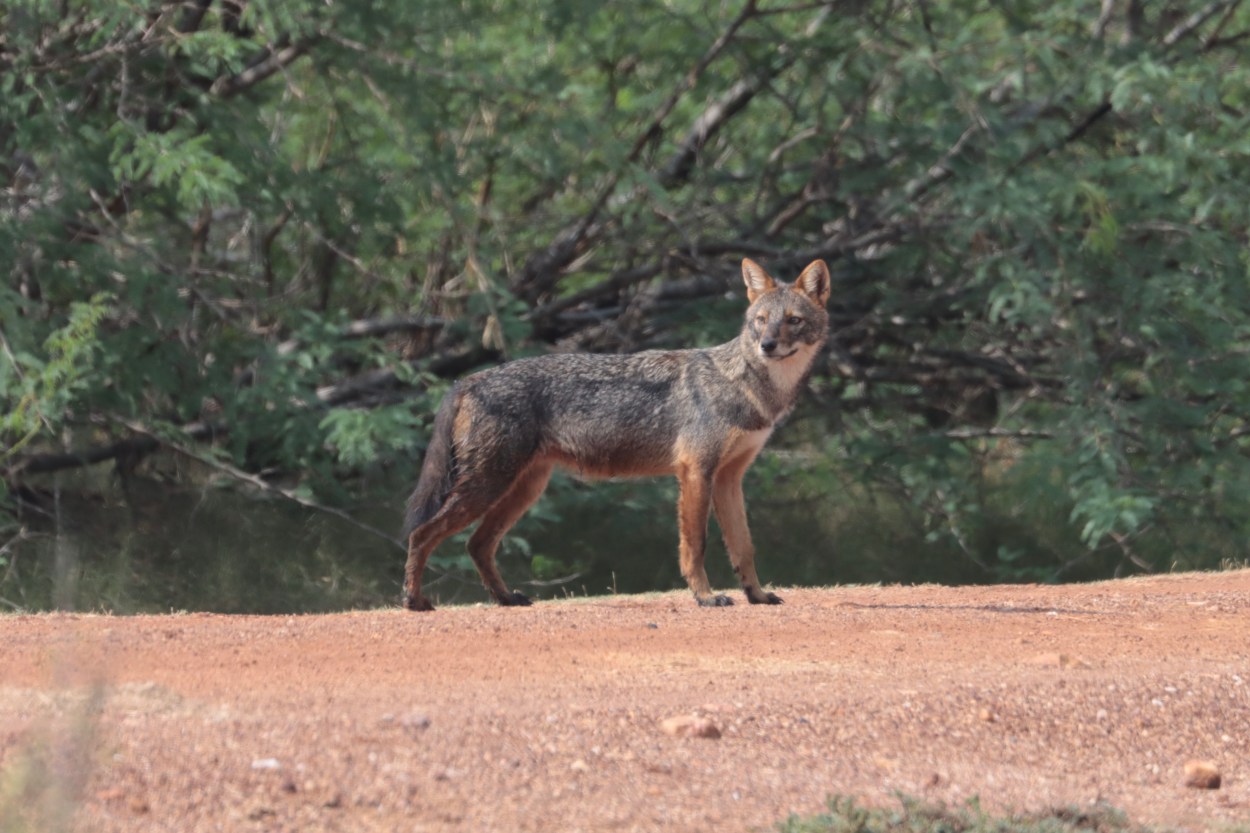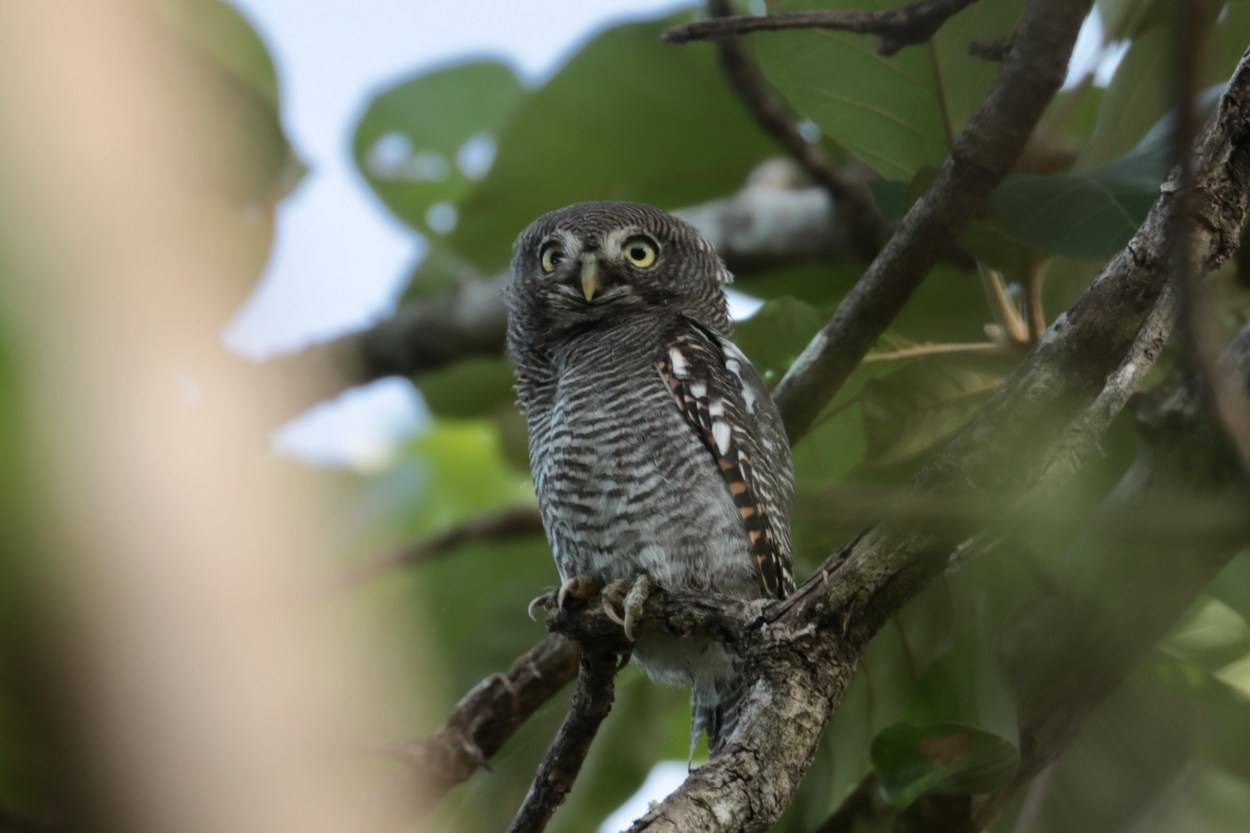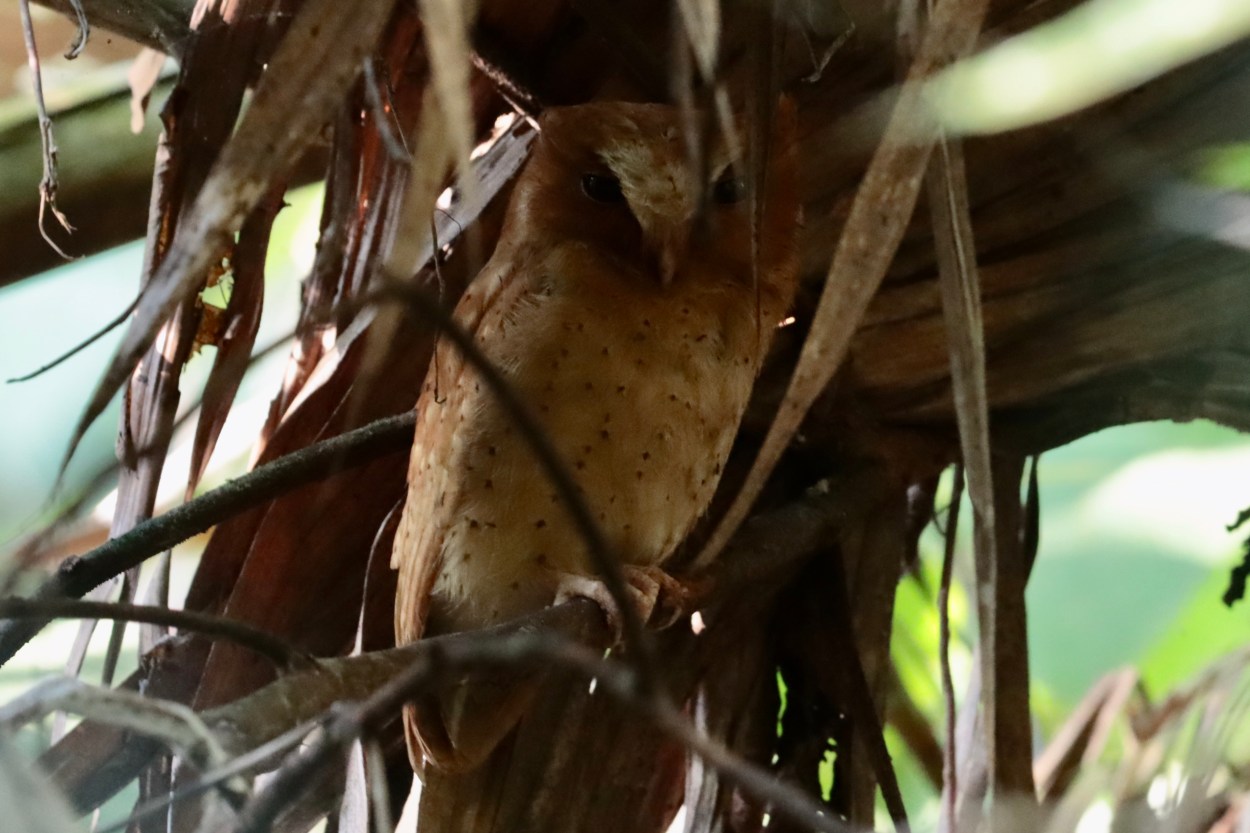
With news of the discovery of a Serendib Scops Owl in the middle of the afternoon on the last full day of our trip, everyone was pumped to see it. This was the last of the 34 Sri Lanka endemic species for us to see but it’s an incredibly rare owl – there are thought to be less than three hundred breeding pairs – having only been discovered in 2001 and confirmed as a new species in 2004. They live on frogs and their call imitates their prey species – making recognising it by call rather difficult! Guides spend the night in the forest listening for it. They then have to locate the roosting site before dawn. Hopefully the bird stays put and allow visitors – closely supervised of course – to see it. We arrived back at the hotel, quickly donned our leach-protective clothing and jumped in the jeeps. Another bare-knuckle ride up rough tracks and we were deposited by a hillside path. The track took us through a tea-pickers property and finished on a steep hillside. One after another we climbed the last few feet to view the roosting owl deep in the shade of an over-hanging palm. Everyone eventually getting good views and some acceptable record shots. Well done Phil & Carolyn for making it! What an amazing end to an amazing day and an amazing trip. Thanks to our fellow travellers for being such good company, a big thank you to Dhammi our outstanding, knowledgeable and helpful guide, to Ornithvacations for making all the arrangements and lastly to Andy Howes for his amazing tour organisation. A wonderful experience! See you all in Madagascar next year!






